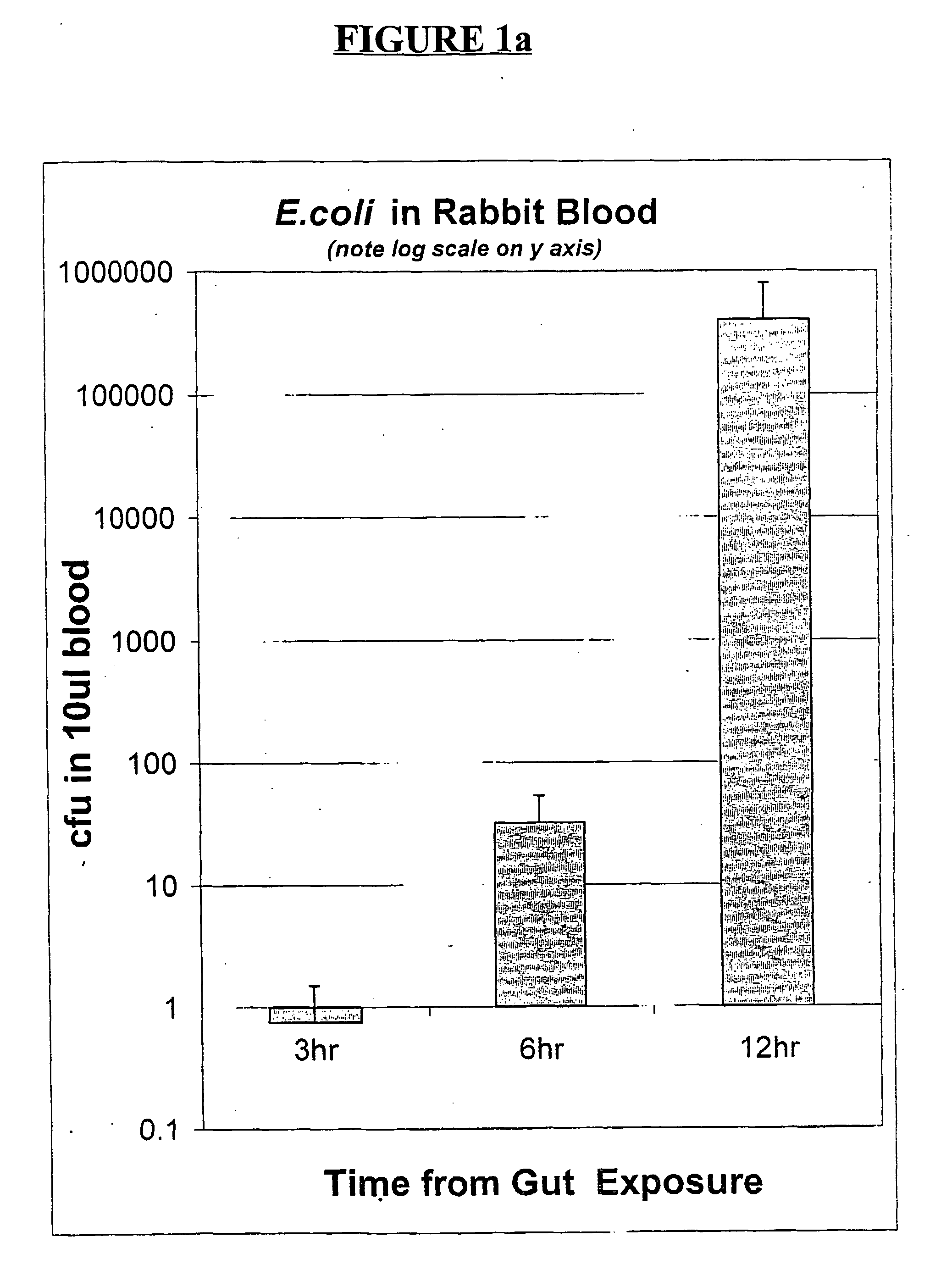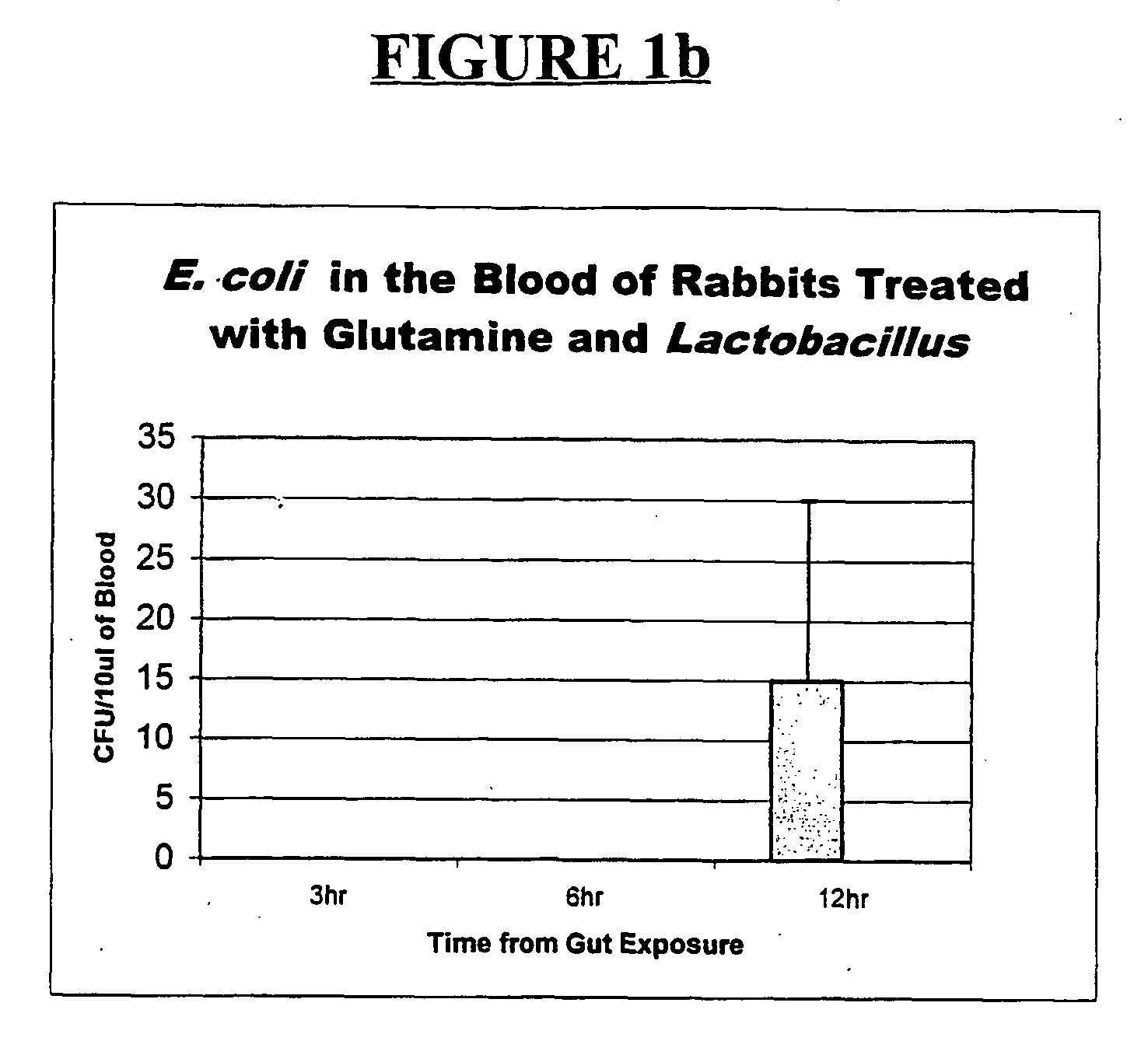Oral gram(+) bacteria and glutamine composition for prevention and/or treatment of gastro-intestinal dysfunctions including inflammation in the gastro-intestinal tract, neonatal necrotizing enterocolitis (nec) and bacterial sepsis
a technology of oral gram(+) bacteria and glutamine, which is applied in the direction of bacteria material medical ingredients, peptide/protein ingredients, biocide, etc., can solve the problems of sepsis involving a very complex sequence of events, no cure, hemodynamic instability,
- Summary
- Abstract
- Description
- Claims
- Application Information
AI Technical Summary
Benefits of technology
Problems solved by technology
Method used
Image
Examples
Embodiment Construction
[0043] Caco-2 cells derived from human adenocarcinoma cells which show all the morphological and functional characteristics of mature small intestinal epithelial cells after differentiation were employed in a number of experimental systems. Panigrahi et al., Development of an in vitro model for study of non-01 Vibrio cholerae virulence using Caco-2 cells, Infect. Immun., 58:3415-3424 (1990). Caco-2 cells were grown in DMEM supplemented with 1% nonessential amino acids, 1% sodium pyruvate, 10% fetal calf serum, 100 U penicillin and 100 .mu.g of streptomycin / mL in a 5% CO.sub.2 atmosphere at 37.degree. C. For transcytosis studies, 0.2.times.10.sup.6 cells in 0.3 mL medium were seeded on the apical side of 0.6 cm.sup.2 polycarbonate transwell filters / clusters (Costar, Cambridge, Mass.). Each basolateral chamber received 1 mL of medium, which was changed every third day.
[0044] A Caco-2 cell transwell system was used in accordance wit...
PUM
| Property | Measurement | Unit |
|---|---|---|
| acid-resistant | aaaaa | aaaaa |
| frequency | aaaaa | aaaaa |
| blood pressure | aaaaa | aaaaa |
Abstract
Description
Claims
Application Information
 Login to View More
Login to View More - R&D
- Intellectual Property
- Life Sciences
- Materials
- Tech Scout
- Unparalleled Data Quality
- Higher Quality Content
- 60% Fewer Hallucinations
Browse by: Latest US Patents, China's latest patents, Technical Efficacy Thesaurus, Application Domain, Technology Topic, Popular Technical Reports.
© 2025 PatSnap. All rights reserved.Legal|Privacy policy|Modern Slavery Act Transparency Statement|Sitemap|About US| Contact US: help@patsnap.com



